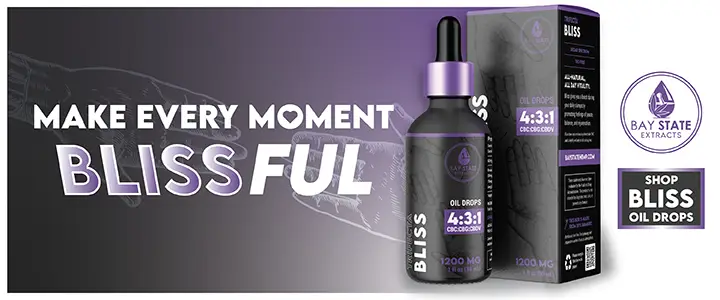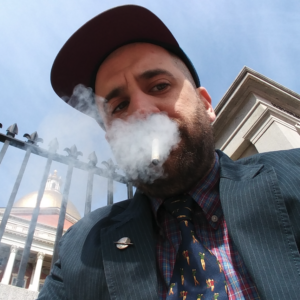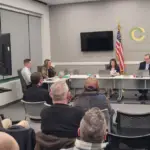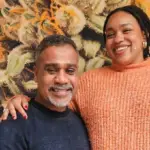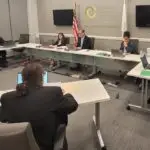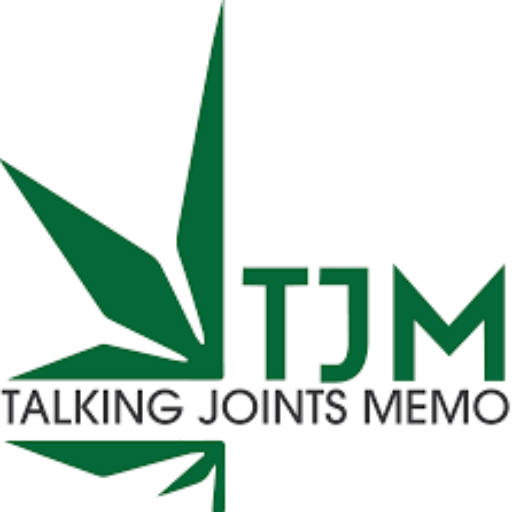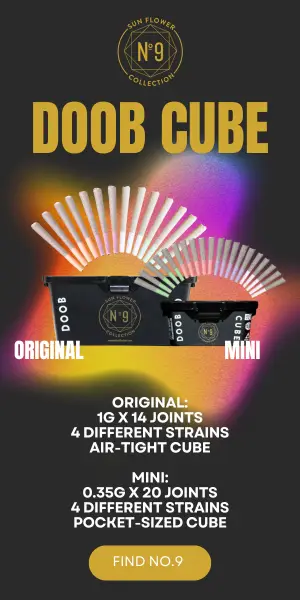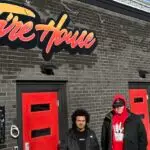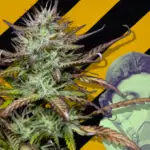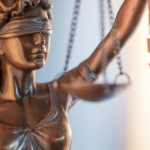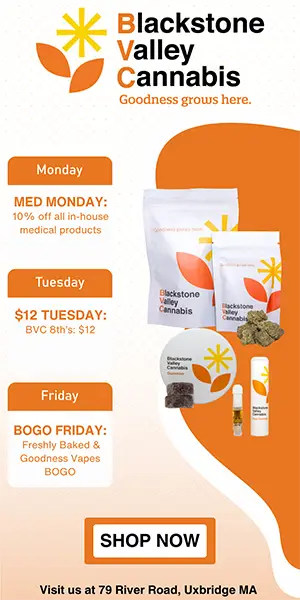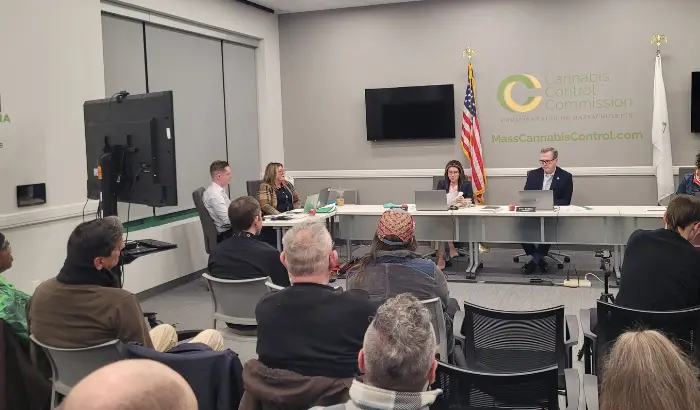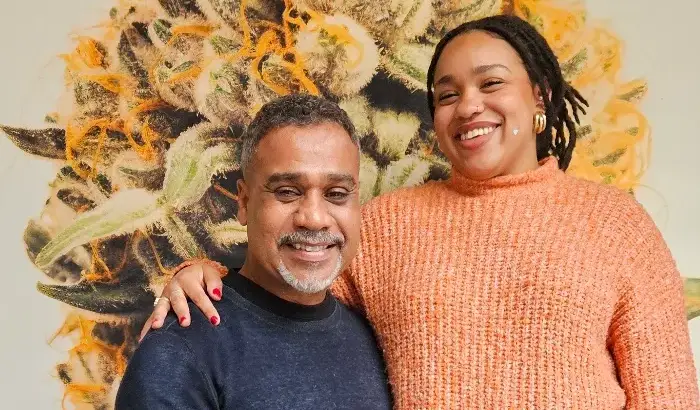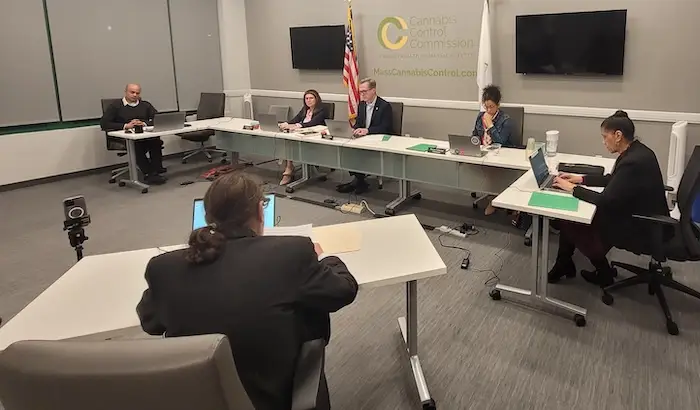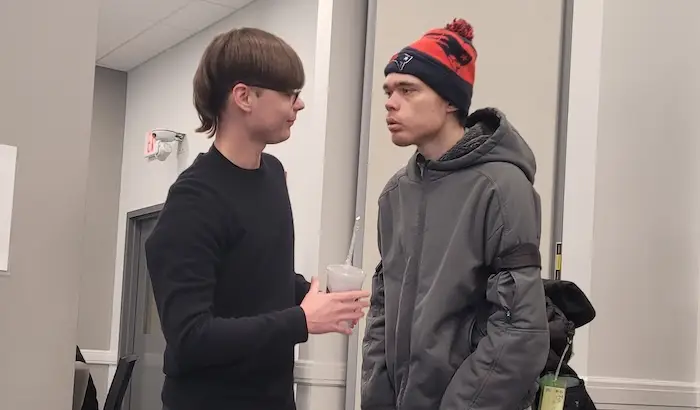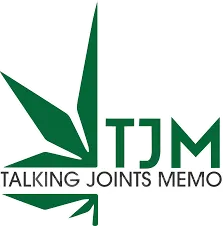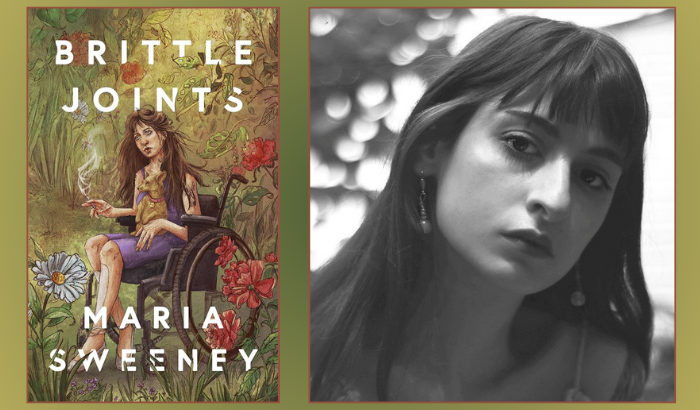
The artist and author speaks on navigating disabilities in a broken healthcare system, cannabis affordability, and cultivating a book over a decade
If you’ve ever advocated or campaigned for cannabis access, then you may have held that clipboard or knocked on those doors with people like Maria Sweeney in mind. “Living with Bruck syndrome, a rare progressive condition that gives her very brittle bones and joint abnormalities … she struggles every day, living in an often-inaccessible world.”
While “ordinary actions like entering a building, sitting at a café, or holding a cup of tea can be drastically different for her than for others,” Sweeney has found “relief” in “alternative therapies, particularly medical marijuana.” It’s all included in extremely earnest detail and unique expressive illustrations in her debut graphic novel, Brittle Joints. I read it in a single sitting, the whole time overwhelmed that she would share so much while also thankful that she did. Her work is personal in a direct way, like you’re out there with her in the world and she is guiding you through her experience. Humbled, impressed, and entertained, I reached out to learn more.
Sweeney was born in Moldova, grew up in New Jersey, and lives outside of Philadelphia. I asked about her “critique of our modern world,” “expansive look at how to live and love amidst the challenges of survival,” and the detour that her project, out now on Street Noise Books, took through the Bay State via the Massachusetts Independent Comics Expo.
We’ll get to your incredible work on the inside in a moment, but first, this cover is absolutely amazing. What was the process behind working on it and what were you specifically trying to convey with it?
Thank you so much. It was incredibly healing bringing in all my favorite elements of nature into the cover and pages. The cover was inspired by Frida Kahlo and Rachel Ruysch, both pioneering artists whose work centers the natural world. There were several versions of the cover before settling on the final design but I knew I wanted to include surrealistic depictions of nature and my little dog, Bambi! I sourced a lot of my inspiration from growing up in the New Jersey Pinelands and accessing a lush forest environment just in my backyard.
Congratulations on the whole project, it’s truly incredible, every page. And beautiful. And deep. How long did it take? There was a Massachusetts Independent Comics Expo mini-grant and some other interesting twists and turns and awards along the way, right?
I had the opportunity to release my self-published version of Brittle Joints at Massachusetts Independent Comics Expo in 2018 and was awarded the MICE min-grant which allowed me to print a larger run of my comic. Along with showcasing Brittle Joints as a featured creator, the early support and community encouragement was so invaluable to me as I continued writing the full book after its initial release. The entire process took close to a decade, beginning with one-page comics in college as I found my sense of style and process for cultivating a story.
I know it takes some time in the book for you to actually be diagnosed with Bruck syndrome, but what’s important for the reader to know about it as we learn about your experience?
Having an extremely rare disability with little research makes obtaining a diagnosis very difficult but this issue is often not discussed. This is something many disabled individuals face when accessing care. Having no diagnosis can cause a multitude of obstacles for people, such as negligent or inappropriate treatment or doctors refusing to see a patient altogether with no diagnosis. It was important for me to shed light on these nuances in navigating disabilities in an often privatized and unaffordable healthcare system that the United States operates with. On a more personal level, there are less than 50 reported cases of folks with Bruck syndrome and that is more than enough people I want to connect directly with!
There is a line where you say, “Why am I constantly at the mercy of people who often don’t experience the same struggles?” Regarding cannabis, was there ever a time, before you went to get your prescription for yourself, when you were annoyed by people saying that you should try weed for the serious problems you were having?
Feelings of frustration would certainly come up from time to time during these conversations. It took a long time for me to be eligible for the medical program in my state. I would struggle with trying to explain why it was hard for me to access but I also know that some folks live in states where cannabis is relatively obtainable and may not fully grasp the necessity for disabled people.

As for getting your med card in New Jersey, that’s a really moving part of the book. Can you tell us what it was like to see the hope of the program right in front of you, only to realize that you couldn’t really afford to participate?
While I was incredibly disappointed after realizing that the process for being approved for the New Jersey medical program was filled with bureaucratic hurdles and restrictive paperwork, I also felt a sense of familiarity. Disabled people are well accustomed to being denied access to a myriad of services and opportunities and this felt no different. Naturally, the program designed to help bring relief to largely disabled people would be filled with barriers for those same people.
Throughout the book, you live in different places—New Jersey, Ohio, now San Francisco. Has access to cannabis been dramatically different in these places and is that something which has ever impacted your decision on where to live?
Cannabis accessibility has definitely varied across the places I lived, with the San Francisco Bay Area being the most available for both recreational and medical patients. New Jersey and Ohio have similar medical programs and it is only within the past year that recreational cannabis has been legalized in both those states. Having varying access to cannabis due to states and federal regulations is incredibly limiting for folks who rely on cannabis as part of their relief.
The book seems to address some of the anxiety of being caught between the natural medicine you are mostly seeking on your own, and the prescription drugs constantly being forced on you. What’s it like to go through that, where you can’t always be so sure your medical doctor is doing the best thing for you?
It is really natural to want to trust physicians when you are looking for help and we are taught from an early age that doctors often know best. I think this can still be a fair sentiment but there is still ableism within the healthcare sphere that disabled community faces. Disabled people are the best decision-makers of their own experiences and needs. Advocating for those needs is a constant, cyclic lifelong learning process and a developed skill. It can be incredibly exhausting.
Your early experiences with medical cannabis in the book happen relatively early, like 2017. What are some of the biggest changes with the adult-use market in the years since, from accessibility to cost to being able to find strains for particular ailments?
While cannabis being legalized throughout different states has made accessing it easier, some barriers still exist. The cost, lack of delivery, and limited options depending on the states make it difficult for patients to actively fill their prescriptions. Some strains of cannabis can be more effective for managing my chronic pain and I have experienced long shortages in accessing specific options. The cost of cannabis is incredibly expensive and is not covered by insurance. Many patients like myself struggle to afford it.
There’s a frame in the book where you are smoking and thankful for the moments of relief cannabis brings, however brief. What are some problems you have found cannabis to be very helpful for, and what has it not helped with that maybe you thought it would have?
Cannabis has a very immediate effect on reducing my chronic pain and neuropathy, as well as improving my general mood in dealing with pain. It’s certainly imperfect and requires moderation and some strains can be a bit unpredictable. Cannabis is not always ideal for focus, depending on the strain, but overall I have a positive experience medicating with it.
Please tell us about your rose blunts, definitely one of my favorite parts of the book.
I was inspired by reading the type of herbs that can also be smoked for relief alongside cannabis, such as lavender, mullein, mint and roses! My partner at the time had a rose bush in his backyard cultivated by his mother and she would show me all kinds of gardening tips and had a little area for me to sit and smoke. Rose petals as a blunt takes some practice and requires drying the petals out just enough—but not too much or it will become brittle. The taste of the rose blunt is unmatched. Sweet, floral, and earthy and slow-burning—a dream combo!
Have you helped to get others in your life to try cannabis when they might need it for a serious health issue? Do you have any advice for having that conversation with someone?
Yes! I worked in the medical cannabis space for six years as a cannabis counselor and educator and it was very fulfilling work. Being an example of how cannabis has positively aided my life helps me relate to others looking for access to similar treatments. I would interact with all kinds of individuals, many of whom had never tried cannabis before. Sometimes patients would have some preconceived notions about cannabis, as the stigma is still pervasive. I like to lead with curiosity when establishing someone’s experience. Ultimately, I would remind patients that this is an as-needed medicine and it is possible it may not be the right fit or at least in this moment of their lives.
There is still much we have to learn and discover as cannabis becomes legalized across varying states, and having it be still federally illegal limits the kind of research that can be done. But things continue to shift in a more accessible direction and I am grateful to be able to witness and participate in carving out access for others.


